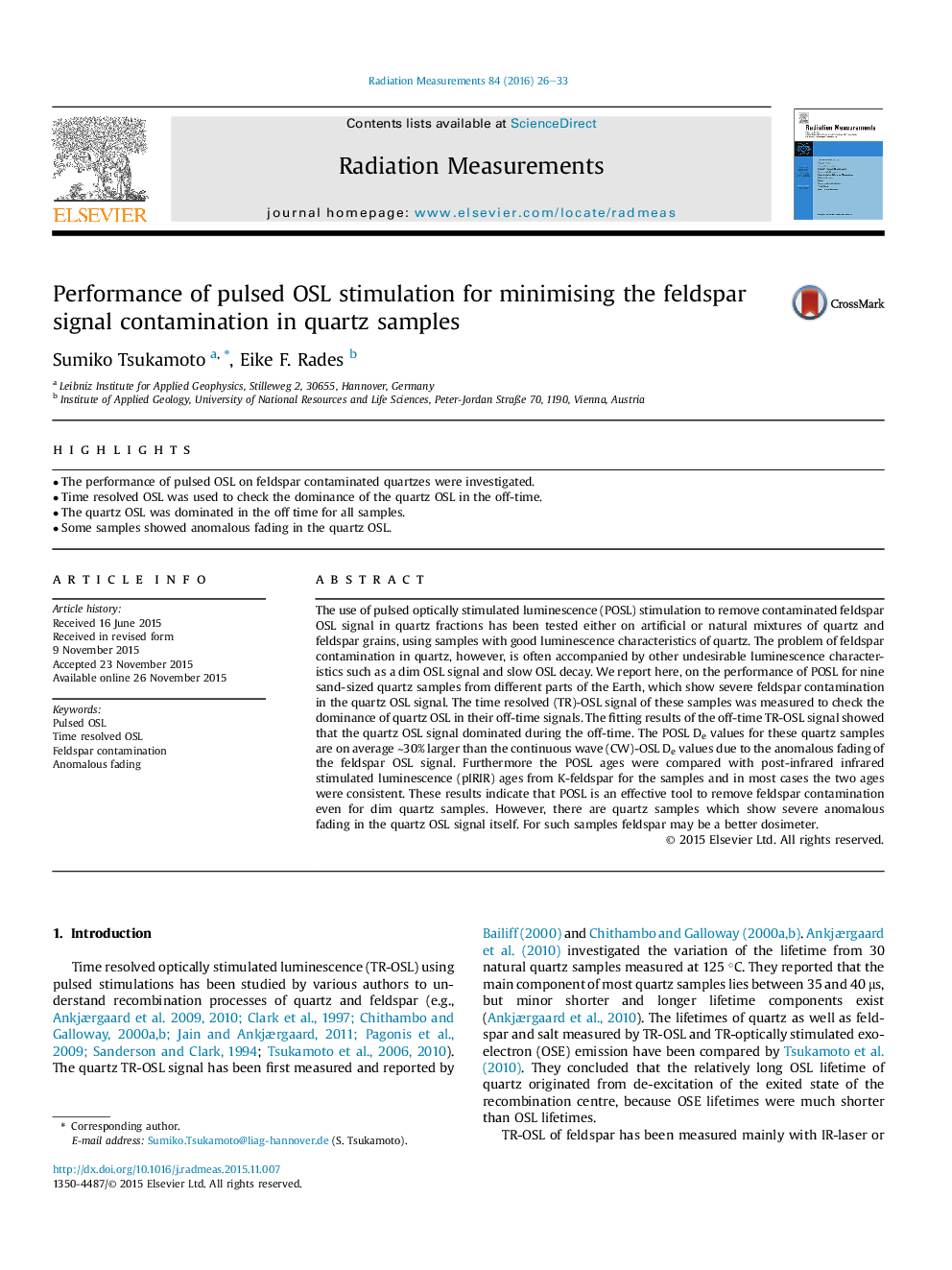| Article ID | Journal | Published Year | Pages | File Type |
|---|---|---|---|---|
| 1884508 | Radiation Measurements | 2016 | 8 Pages |
•The performance of pulsed OSL on feldspar contaminated quartzes were investigated.•Time resolved OSL was used to check the dominance of the quartz OSL in the off-time.•The quartz OSL was dominated in the off time for all samples.•Some samples showed anomalous fading in the quartz OSL.
The use of pulsed optically stimulated luminescence (POSL) stimulation to remove contaminated feldspar OSL signal in quartz fractions has been tested either on artificial or natural mixtures of quartz and feldspar grains, using samples with good luminescence characteristics of quartz. The problem of feldspar contamination in quartz, however, is often accompanied by other undesirable luminescence characteristics such as a dim OSL signal and slow OSL decay. We report here, on the performance of POSL for nine sand-sized quartz samples from different parts of the Earth, which show severe feldspar contamination in the quartz OSL signal. The time resolved (TR)-OSL signal of these samples was measured to check the dominance of quartz OSL in their off-time signals. The fitting results of the off-time TR-OSL signal showed that the quartz OSL signal dominated during the off-time. The POSL De values for these quartz samples are on average ∼30% larger than the continuous wave (CW)-OSL De values due to the anomalous fading of the feldspar OSL signal. Furthermore the POSL ages were compared with post-infrared infrared stimulated luminescence (pIRIR) ages from K-feldspar for the samples and in most cases the two ages were consistent. These results indicate that POSL is an effective tool to remove feldspar contamination even for dim quartz samples. However, there are quartz samples which show severe anomalous fading in the quartz OSL signal itself. For such samples feldspar may be a better dosimeter.
